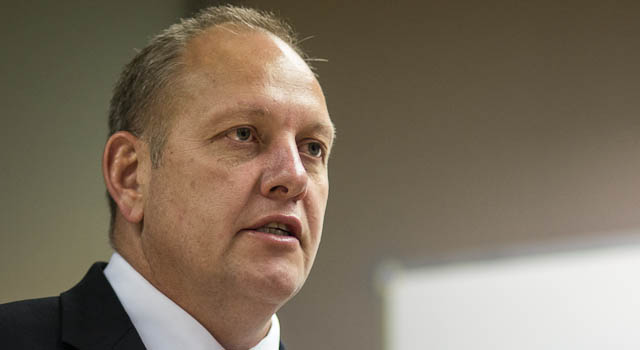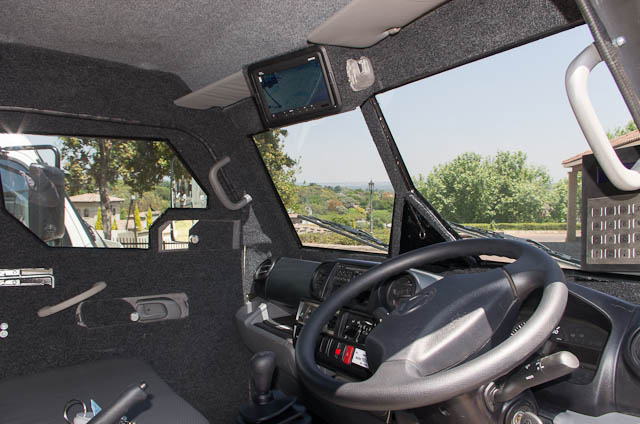
Security specialist G4S has partnered with UK-based fleet services company Imperial to overhaul its 720 armoured vehicle fleet, upgrading the technology that protects the vehicles’ crews and contents in the process. The deal is worth R450m over five years at current exchange rates.
G4S Cash Solutions SA MD Albert Erasmus says the company opted for a lease agreement, the first company of its kind in SA to do so. Imperial will replace 261 G4S vehicles in the first nine months of the deal, with the remaining 459 to be replaced in the following two years.
Sales director Jannes Venter explains that the new vehicles will be kitted out with advanced security technology.
Each driver will be issued with an electronic key to activate the technology contained in the cab section of the vehicle. The other two members of the three-person crew are issued with their own electronic keys to access rear of the vehicle.
“You need both systems active in order to open the back of the vehicle,” Venter explains. “The driver needs to identify the crew visually before using his key. There’s a camera fitted to the rear of the vehicle for this purpose.”
Each vehicle has four cameras. In addition to the rear camera, there is also one in the crew area at the back of the vehicle, inside the vault, and inside the cab. Each is linked to a digital video recorder, the content of which is downloaded each day and stored for three years. Each camera can also be accessed remotely through the vehicle’s tracking system, but these are not monitored in real time.
Each vehicle includes an escape hatch in the crew area. If this is activated, the vehicle is locked down and information about its location is sent to the control room immediately.
“Messages are sent through a tracking system called ‘Scope’ that combines GPS and GSM cellular,” Venter says. Scope is part of another arm of G4S, G4S Technology Solutions. “Scope is sold to track-and-trace retail businesses, too. The vehicle’s armour is installed at the same time as the Scope technology.”
The main GSM services supplier is Vodacom, but the system also supports MTN for failover or in cases where there is better coverage. The GPS hardware is a standard Tracker system combined with G4S proprietary software.
Additional security measures ensure that the cab door cannot be opened if any other doors are open. Similarly, the vault cannot be opened if any other doors are open. Those vehicles that conduct cash collections are fitted with a pair of category-three drop-safes of the sort found in retail stores.
Each vehicle is also fitted with a range of scanners so each bag or package entering or leaving the vehicle can be scanned and tracked.

Venter says there has been a big decrease in cash-in-transit crime in recent years. The bulk of attacks occur between the vehicles and the delivery or collection points rather than on vehicles themselves, but incidents are becoming less frequent in both instances.
In 2009, there were more 200 incidents, of which 30 were vehicle attacks. Last year, there were 95 incidents, and so far this year there have been only 56. Venter says four of the incidents this year have been vehicle attacks and those have been against competitors’ vehicles.
Venter attributes the decline to technological advances and investments in security by banks, retailers and cash-in-transit companies.
Asked about the dangers of inside jobs, Venter says these are becoming more difficult to execute on the vehicles in light of the new systems. “But we can’t control retailers or third parties’ security systems, and those can be targets, too.”
G4S’s new fleet includes large armoured vehicles that cost almost R1m each and have 2,5 tons of armour and technology. It also has smaller, customised Toyota Hilux vehicles for use in rural areas. The Hilux vehicles carry far less cash than the larger vehicles in the fleet and cost about R700 000 each. — (c) 2012 NewsCentral Media

